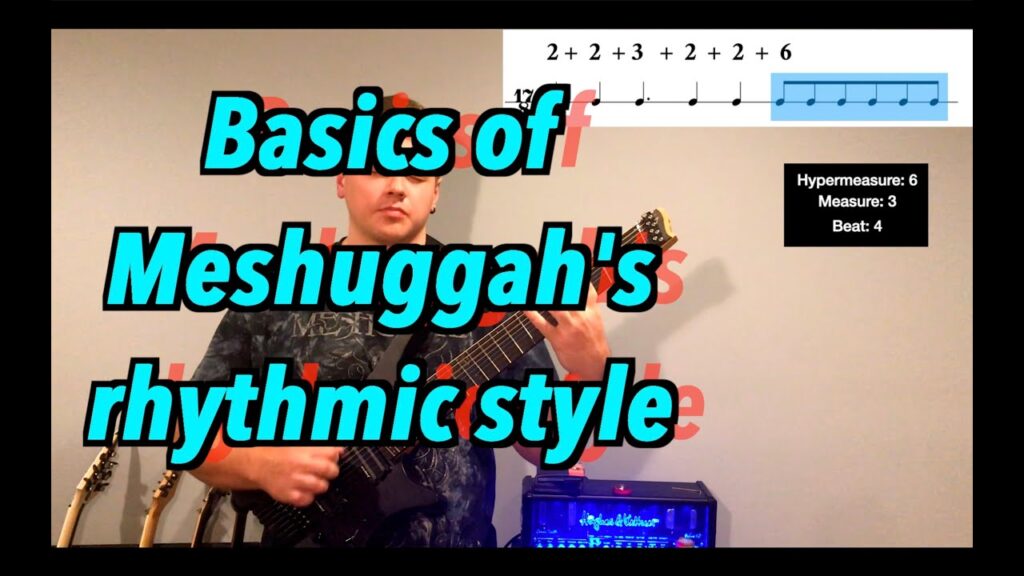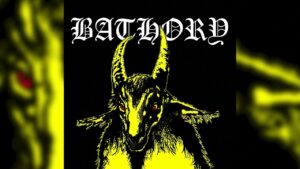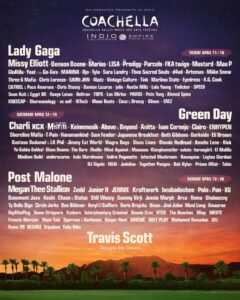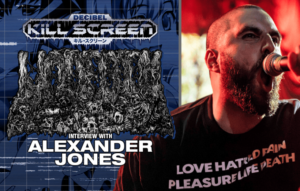Introduction to Meshuggah’s Rhythmic Style

Alternate title: “Music theorists react to Meshuggah!”
Second alternate title: “So you’ve heard of a Meshuggah, but what does it do and what is it used for?”
There are a few versions of this type of thing on Youtube, but I haven’t seen any that draw on the very cool scholarship about Meshuggah’s music. Here I try to both explain the basics of Meshuggah’s style and show some of the directions that their music, and scholarship about their music, have gone.
In alphabetical order, here are the sources I mention. I realize not all are easy to access; if you really want to read something but don’t have institutional access and don’t want to pay for it, try contacting the author! I love knowing that people want to read my work and am happy to send a pdf if possible, and that’s been my experience with most scholars.
For some very cool visualizations and interpretations of riffs, and several in-depth analyses (including of “Do Not Look Down”):
Capuzzo, Guy. 2018. “Rhythmic Deviance in the Music of Meshuggah.” Music Theory Spectrum 40 (1): 121–37. https://doi.org/10.1093/mts/mty005.
For a very cool, detailed but accessible exploration of note choice (ie harmony) in Meshuggah’s riffs and solos, check out Daniel Crawford’s series of videos!
https://www.youtube.com/watch?v=VwoGoyKmo70 and all the others
For more about heaviness, the “polymetrical cadence” and an analysis of “I Am Colossus”:
Hannan, Calder. 2018. “Difficulty as Heaviness: Links between Rhythmic Difficulty and Perceived Heaviness in the Music of Meshuggah and The Dillinger Escape Plan.” Metal Music Studies 4 (3): 433–58. https://doi.org/10.1386/mms.4.3.433_1.
For some more about “Bleed,” check out my first riff analysis video (Riff Analysis 001)
For some more about how Meshuggah builds riffs by manipulating smaller chunks:
Hudson, Stephen. 2014. “Fragments of Riffs and Small Alterations in Meshuggah’s ‘ObZen.’” Metal In Theory (blog). June 30, 2014. http://metalintheory.com/meshuggah-obzen/.
For analysis of riffs with pitch and rhythm on cycles of different lengths:
Hudson, Stephen. 2016. “Disconnecting Rhythm and Pitch in Meshuggah’s ‘Nostrum.’” Metal In Theory (blog). October 8, 2016. http://metalintheory.com/meshuggah-nostrum/.
For more on changes to the drum patterns: Lennard, Chris. 2016. “Deforming the Backbeat: Dissonant States and Musical Expression in Meshuggah’s ObZen and Koloss.” Paper in Master’s Portfolio, Cincinnati, OH: University of Cincinnati College-Conservatory of Music.
For a solid, in-depth academic theory of meter and rhythm in general:
London, Justin. 2012. Hearing in Time: Psychological Aspects of Musical Meter. 2nd ed. New York: Oxford University Press.
For some very cool analysis of riffs that seem to “start in the middle”:
Lucas, Olivia. 2018. “‘So Complete in Beautiful Deformity’: Unexpected Beginnings and Rotated Riffs in Meshuggah’s ObZen.” Music Theory Online 24 (3). http://mtosmt.org/issues/mto.18.24.3/mto.18.24.3.lucas.html.
For that paper about Meshuggah’s lightshow:
Lucas, Olivia. 2019. “The Analytical Lightshow: Concert Lighting as Analysis in Extreme Metal Live Performance.” In . Columbus, OH.
For the first academic Meshuggah article and analysis of “I”:
Pieslak, Jonathan. 2007. “Re-Casting Metal: Rhythm and Meter in the Music of Meshuggah.” Music Theory Spectrum 29 (2): 219–45. https://doi.org/10.1525/mts.2007.29.2.219.
For analysis of Catch-33 and thoughts on the 4/4 vs polymeter debate:
Smialek, Eric. 2008. “Re-Thinking Metal Aesthetics: Complexity, Authenticity, and Audience in Meshuggah’s I and Catch 33.” Masters Thesis, Montreal: McGill University.
For more on the feel vs calculation debate:
Smialek, Eric, and Méi-Ra St-Laurent. 2019. “Unending Eruptions: White-Collar Metal Appropriations of Classical Complexity, Experimentation, Elitism, and Cultural Legitimization.” In The Routledge Companion to Popular Music Analysis, edited by Ciro Scotto, Kenneth M. Smith, and John Brackett. Routledge Music Companions. Taylor and Francis Group.
If I missed anything, let me know!
source







